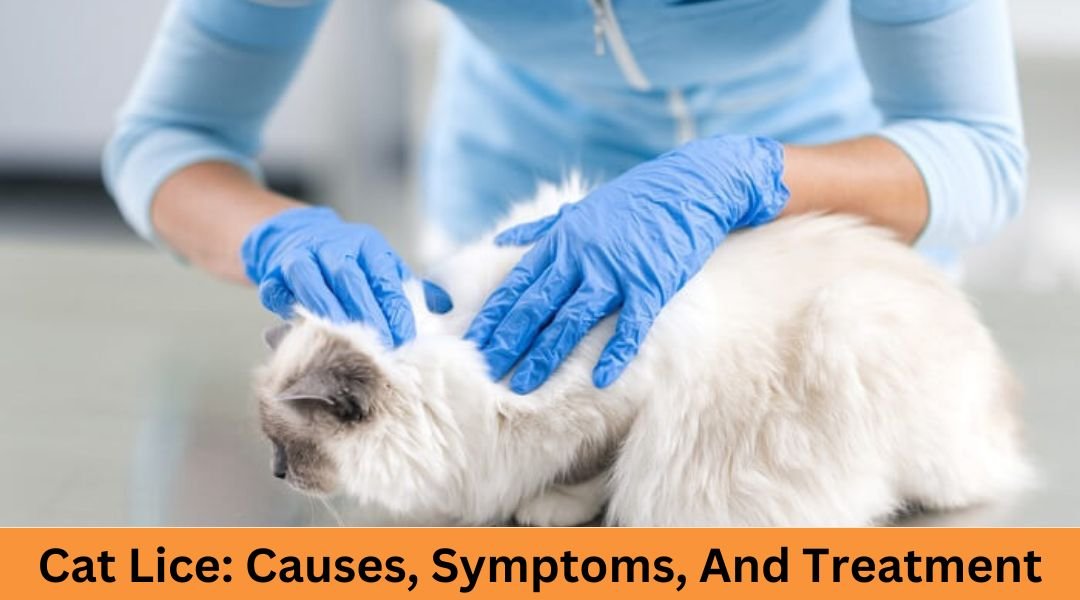Cat Diseases, Cat Health
Cat Lice: Causes, Symptoms, And Treatment
Are you a pet owner of a beloved kitty? If that’s the case, it’s not surprising that your pet can get infections and parasites. One type of parasite is cat lice. These annoying bugs can cause serious problems if not treated. While lice in cats are rare, it’s important to know their causes, symptoms, and treatment. This will help keep your cat healthy. In this blog post, we will talk about what cat lice are. We will also look at signs that your cat may have them and ways to get rid of them from your home.
What is Lice?
Lice, an external parasite that feeds on the blood of their host, can be a real nuisance for cats. While fleas and ticks are more common, lice can still cause itching and irritation in cats. Small, flightless bugs cling to cat hair and drink their fluids. Adult lice lay eggs, which they cement to the hair, making them difficult to spot with the naked eye. If you think your pet has lice, act fast to stop it from spreading. A visit to the vet can confirm the diagnosis and provide advice on how to treat the problem best.
What Are The Symptoms Of Cat Lice?
As cat owners, we all know how important it is to keep our feline friends happy and healthy. Sometimes, we don’t notice health problems, especially when we need help recognizing them. If you think your cat has lice, you must act to stop them from spreading. Cats with lice may groom a lot, scratch, lose hair, and have tiny white nits on their fur. If you see any of these signs, talk to your vet to keep your cat healthy and happy.
Causes of Cat Lice
As much as we love and care for our feline friends, some pesky and unwanted guests can latch onto them lice. Despite our best efforts, cats can still develop these tiny and irritating parasites. The causes of cat lice can vary, but they are most commonly spread through direct contact with an infected animal. Other risk factors include poor grooming habits and unsanitary environments. Cat lice don’t usually cause serious health problems, but they can make cats and owners uncomfortable. To keep our pets safe, we should take preventive measures and keep them clean. This will reduce the risk of unwanted pests.
How Do You Diagnose Cat Lice?
As cat owners, we always try to make our furry friends feel comfortable and safe. However, sometimes, we might miss something that’s hiding within their coats. Yes, you guessed it lice! These pesky bugs can be a real nuisance for both cats and owners. But how do you diagnose cat lice? It’s important to keep an eye out for any visible signs, such as excessive scratching, biting, or licking fur. You can check if your cat has lice by using a fine-toothed comb. Look for small, white specks on their fur. Don’t worry; there are treatments out there that can help get rid of lice and make your kitty feel comfortable again!
How Are Cat Lice Treated?
As cat owners, we know that our furry companions need regular grooming and care to stay healthy and happy. However, even with our best efforts, sometimes our cats can pick up unwanted visitors like lice. While cat lice may sound alarming, the good news is that there are effective treatments available to combat them. Your vet might suggest a cream or medicine, depending on how bad the problem is. To get rid of lice, follow their instructions and finish the treatment completely. With proper care and treatment, your cat can be lice-free and back to their playful, cuddly selves in no time.
Treatment for Cat Lice
Cat lice can be a pesky problem for feline friends and their owners. If your cat scratches or bites a lot, they might have lice. Don’t worry, though there are treatment options available! Usually, when treating cat lice, you apply medicine on their fur, like flea shampoo or powder. Make sure to follow the instructions for your cat’s safety during treatment. To prevent the problem from coming back, clean your cat’s bedding and where they spend time. With proper treatment and care, your cat will be lice-free and back to their happy, healthy self in no time.
Conclusion:
This blog post teaches you all about cat lice and how to prevent, diagnose, and treat it. To keep your pet healthy, visit the vet regularly, schedule check-ups, and learn safety tips. To keep your cats safe, make sure to protect them from fleas, keep them clean, and feed them well. If you have any questions about cat lice, like what causes it, the symptoms, or treatments, please contact us. We’re always here to help!


